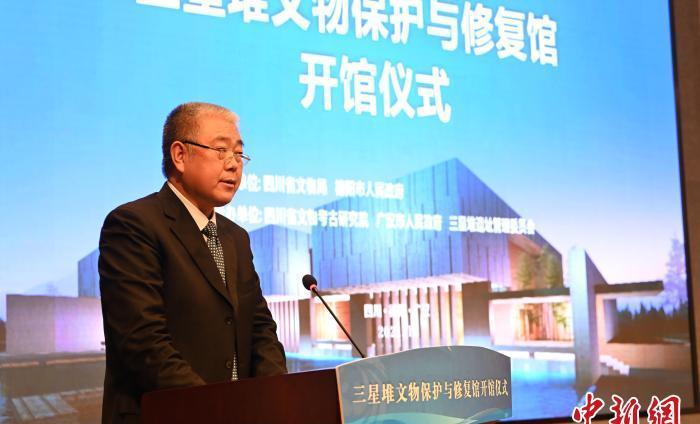
The picture shows Tang Fei, president of the Sichuan Institute of Cultural Relics and Archaeology. Photo by AnYuan
Guanghan, China News Network, December 18 (Reporter Yue Yitong) Tang Fei, president of the Sichuan Provincial Institute of Cultural Relics and Archaeology, released the latest restoration plan for the cultural relics excavated from the sacrifice pit at the Sanxingdui site in Guanghan, Sichuan on the 18th.
According to reports, since October 2020, the Sichuan Provincial Institute of Cultural Relics and Archaeology has successively launched the archaeological excavation of Pits No. 3 to No. 8 in the Sacrifice Area of sanxingdui site, and a large number of bronzes, gold, jade, stone tools, pottery, ivory, etc. have been excavated.
Tang Fei said that according to the approval opinions of the State Administration of Cultural Heritage on the "Plan for the Protection and Restoration of Cultural Relics Unearthed at the Sanxingdui Site" and the "Preventive Protection Plan for the Cultural Relics Unearthed at the Sanxingdui Site", the Sichuan Provincial Institute of Cultural Relics and Archaeology will, under the leadership and support of the State Administration of Cultural Relics and the Sichuan Provincial Bureau of Cultural Relics, proceed from three aspects to carry out the restoration and research of the cultural relics excavated from the sacrifice pit of the Sanxingdui site.
First, systematically sort out and spell out the fragments of artifacts that were once considered irreparable to be excavated from the No. 1 and No. 2 sacrificial pits in the Warehouse of the Sichuan Provincial Institute of Cultural Relics and Archaeology and the Sanxingdui Museum; collect and consult the restoration data of the repaired artifacts in the No. 1 and No. 2 sacrificial pits, adopt a variety of scientific and technological methods to comprehensively screen and diagnose them, and establish a cultural relics restoration archive;
Second, for the artifacts excavated from the No. 3 to No. 8 sacrifice pits, the damage of the artifacts is sorted out by the pit as a unit system, and a three-dimensional database of various artifacts is established; the archaeological methods, analysis and detection, computer big data and artificial intelligence are combined to comprehensively carry out the collation, collation and restoration demonstration of the cultural relics excavated from the sacrificial pits; a number of typical artifacts with complete spelling and strong analytical data support are selected for restoration, providing new exhibition artifacts for the Sanxingdui Museum.
Third, the system to carry out multidisciplinary research on excavated cultural relics, such as bronze, gold and jade ore sources and production processes, ivory origin sources, sacrifice pit burial forms, sacrifice behavior, etc., to provide support for the protection and restoration of excavated cultural relics and the study of ancient Shu civilization. (End)